The 17th Annual Baltic Conference on Defence (ABCD),
organised by the International Centre for Defence and Security (ICDS) and the Estonian Ministry of Defence (MoD), took place on 26-27 September 2023 in Tallinn, Estonia.
A Silver Medal is Not Good Enough
Mobilising Ourselves to Deter Another War in Europe
Summary of the ABCD 2023
The 17th Annual Baltic Conference on Defence—“A Silver Medal is Not Good Enough: Mobilising Ourselves to Deter Another War in Europe”—focused on the European and western security environment through two major lenses: 1) the ongoing Russian war of aggression in Ukraine, and 2) the results of the July NATO Vilnius Summit. With panel and keynote topics that ranged from arms control to European weapons procurement, the conference ultimately provided a platform for meaningful discussions that assessed the current and future European political, economic, and military prospects in a world where Russia remains a viable regional threat.
The following summary first provides a short list of the main takeaways from the ABCD 2023. These conclusions are not intended to be an exhaustive list; instead, they highlight some thought-provoking ideas. Following these takeaways, summaries of the panels, breakout discussions, and on-the-record conference keynotes are provided.
Key Takeaways
- Russia’s war on Ukraine will continue, and it will likely be a protracted fight.
We must commend the Ukrainians’ resiliency, resolve, and immense courage in gaining back every inch of territory. However, Putin’s long-term ambitions in his war of aggression against Ukraine have not changed. Thus, it is paramount that the west must not become weary regarding aid—it is a necessity to ensure the war ends in a way that ends Russia’s perpetual cycle of violence and holds Russia accountable.
- Post-Vilnius, NATO (and the EU) have some work to do—especially regarding European weapons procurement and ammunition stockpiling.
Many have optimistically hailed the results of the NATO Vilnius summit in July of 2023 as successful for the Alliance and European security in general. Significant promises and policies were agreed upon—including a new Force Model, shifts to regional defence plans, the scaling up of multinational units, and enhancements to air defence posturing. The implementation of these promises will face many challenges, especially given the woeful status of European munitions stockpiles and manufacturing bottlenecks. Yet, there is hope in the use of joint, multinational procurement deals that efficiently enable more effective purchases (e.g., in air defence) and the potential use of the European Union as a convening body for such financial decisions.
- The Russian military has also learned lessons from Ukraine, such as those pertaining to troop composition and military technology.
The Russian military has been relatively adaptable in its tactics in Ukraine, however, the battlefields in Ukraine have revealed a core lesson regarding conventional wars: “mass matters,” especially in terms of hard power. In some ways, this has been a vindicating takeaway for the “old guard” of the Russian military, demonstrating that a massive, metal-heavy military can be a successful force in a conventional fight. Moreover, the proliferation of cheap and scalable technology—like ISR and attack drones—remains a flashpoint in the war. Politically, Russian leaders have similarly learned the importance of allies—such as China or those in the global south—and have successfully survived the brunt of western sanctions.
- The Indo-Pacific remains an area of vulnerability for the United States—particularly regarding resource allocation in the event of increasing hostilities with China.
Even given a “tilt” or “pivot” to Asia, US-Chinese relationships are increasingly shaky and unstable, meaning that it is more and more likely that the US military, both in terms of troops and assets, could be stretched thin between the Indo-Pacific and Europe. The Chinese-Russian “no limits” partnership has similarly exacerbated the situation in these theatres, a relationship that will likely continue. Yet simultaneously, western actors should attempt to get past this “two-front” dilemma and build bridges on common issues with China and the broader Indo-Pacific, in particular concerning economic points of connection.
- Ultimately, the instability in Europe is here to stay, and Allies need to begin to prepare for a long-term approach to credible deterrence sustainably.
Opening Session: Defending Every Inch – Time for Some Proper Weightlifting
The ABCD 2023 officially opened with keynote speeches from Kaja Kallas, the Prime Minister of Estonia, and General Darryl Williams, the Commander of the United States Army Europe and Africa and NATO Allied Land Command. Prime Minister Kallas focused on the need for the west to “keep pace” with Ukraine for as long as the war continues. She called for the audience to not allow the world to become weary of the war and for European policymakers to act on the commitments made at the Vilnius Summit and pointed out that the Russian threat would not disappear any time soon. She praised the results of the Summit and remained hopeful about the Alliance’s ability to implement the commitments made in Vilnius.
The keynotes were followed up by a panel discussion that addressed the speakers’ impressions of the western and Russian responses to the developments in the war. Each speaker addressed the unprecedented security effort from the west and emphasised the increased need for coordinated European defence spending and procurement to allow for more efficient and effective deterrence. The panellists agreed that the Russian threat is a long-term one and that while Putin’s goals for the war in Ukraine are unchanged, the Russian military is learning lessons from the battlefield. They also addressed perceived areas of vulnerability for NATO—with emphasis on political challenges and nuclear posturing. Again, Europe was called on to revitalise its coordination and political approach to ensure hard and tangible commitments to military, financial, and political aid. Regarding the nuclear threat, the speakers agreed that it was a tried-and-true Russian card to play. While problematic, it was still only a threat, but one that should provoke more productive discussion around the nature of the nuclear blackmail within western societies.

’Night Owls’ Session by Royal United Services Institute (RUSI): War in Ukraine – What’s the Score?
The late-night session of the first day of the ABCD 2023 was hosted by speakers from the Royal United Services Institute (RUSI). The panellists attempted to paint a nuanced picture of the current and future state of Russia’s war in Ukraine on a tactical, operational, and strategic level based on their analysis and first-hand experiences within Ukraine. The tactical description focused on the ongoing summer 2023 counteroffensive, which has seen multiple lines of effort to push through Russian-occupied territory, such as in Zaporizhzhia, around Bakhmut, and operations in the Black Sea. An opinion was raised concerning how western perceptions of the war ultimately limit and sometimes hinder the Ukrainians’ use of their forces and choice of operations. The tactical outlook was then expanded to account for the operational to geo-strategic implications of the war, particularly in terms of ammunition and training needs. It seems Russia has begun ramping up production in munition supplies and recruitment of personnel, while the European picture is more tenuous. More specifically, this assessment considered the likelihood of American support being spread thin and European supply lines and procurement pipelines bogged down, leaving an insecure defence landscape, especially in the air domain. Finally, the picture was completed with a description of the ongoing controversy concerning the grain deal in the Black Sea, which considered how Russia’s “clout” has declined and emphasised the importance of ensuring Ukraine can continue using the sea for trade flows.
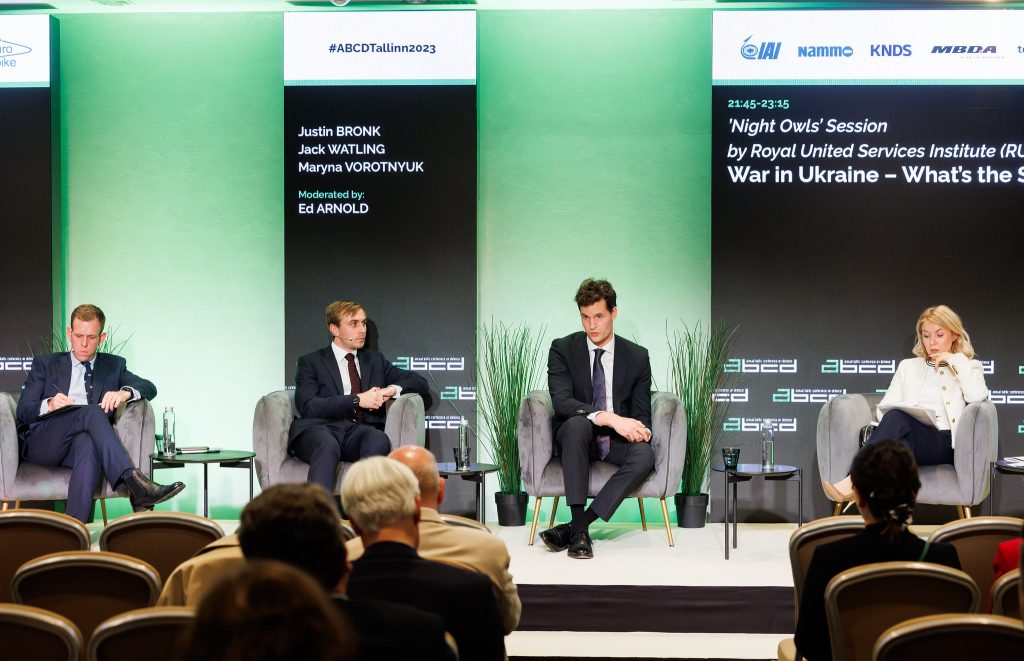
Breakfast Breakout #1: Defence and Deterrence in the Indo-Pacific – Is There a Gameplan?
This morning panel was, in principle, a shift away from Russia’s war in Ukraine and focused on how the Indo-Pacific remains a politically, economically, and militarily active region even as the war in Europe rages on. The speakers addressed the need for Europe more broadly, but also European actors individually, to be engaged within the region, especially regarding an increasingly hostile China. There are bright spots in this picture, such as alliance management with several regional partners, in particular Japan, that is progressing the idea of a resilient and cooperative alliance network. However, regardless of these developments, China remains a vital yet ambiguous actor in the region. Indeed, Chinese economic and military assertiveness and “no limits” partnership with Russia certainly contribute to its tenuous reputation. Multiple speakers agreed that China is indeed benefitting from Russia’s war in Ukraine, as the partnership is an indirect way to undermine the international order and provoke instability in Europe. However, they discussed how the European Union and European actors can build closer relationships with the Indo-Pacific—with an acknowledgement that western actors must attempt to find points of connection (economically in particular) to enable a semblance of regional stability and engagement with China.
Breakfast Breakout #2: Defence Industry and Innovation – Whose Court Is the Ball In?
The parallel morning panel allowed defence industry practitioners and analysts to weigh in on the complex environment of the defence industry and innovation space. The panellists echoed previous remarks when stating that the European community is currently underperforming when connecting the actors within the defence industry and innovation spaces. More specifically, while there is no shortage of agreement between policymakers and the defence industry—more investment and collaboration need to occur—the risk remains that national and international politics could hijack or slow down this call to action. Particular emphasis was placed on the balance between disruptive and legacy technology. The panellists agreed that both are equally important, especially concerning Russia’s war in Ukraine, yet on the innovative front, drones were put forward as a critical technology that will be especially prevalent. Moreover, artificial intelligence will be a field that will likely see immense innovation within the private sector, revealing the conclusion that the defence ecosystem must partner with private actors to fully take advantage of such an emerging technology. Thus, governments will need to tackle increasing problems surrounding crafting an innovative culture, ensuring there is a ready demographic to take on roles in the defence industry, and making sure that there is a sustained, long-term will for governments to endure budgetary and bureaucratic challenges to make collaboration effective.
Keynote Session #1: Making the Powerplay Count
The first keynote session on the second day of the conference featured remarks by Boris Pistorius, the Federal Minister of Defence of Germany, and Hanno Pevkur, the Minister of Defence of Estonia, followed by a moderated discussion with both ministers. Minister Pevkur echoed many of Prime Minister Kallas’ calls to action. For instance, he urged Europe to do more for its defence needs and described the European capacity for and pace of production and procurement. Concerning European spending, he proclaimed the need for European actors to invest more in terms of their budgetary commitments to defence. Ultimately, Minister Pevkur concluded with the sombre resolution that support for Ukraine is paramount, as, without it, Europe heads toward a divided and unstable regional security environment. Minister Pistorius began with an optimistic discussion of the Estonian-German partnership; he commended Estonia for its uncompromising stance on Russian aggression and its support for Ukraine while being on the vulnerable eastern flank of the Alliance. Minister Pistorius primarily focused on his assessments of European cooperation and collective approach to defence. He emphasised the need for increased interoperability and interchangeability within the Alliance and spoke of the German-led Sky Shield initiative, which would hopefully allow for more effective joint procurement and maintenance
The moderated discussion featured country-specific, regional, and Alliance-directed questions. For instance, the NATO 2% spending commitment was brought up, especially regarding the German “Zeitenwende” security and defence policy shift that has seen increased military investment and build-up. Minister Pistorius acknowledged that while Germany has faced substantial criticism, it remains a steadfast partner for Ukraine and will continue to find routes to provide aid. The ministers also asserted their positive assessments of the results of the Vilnius Summit. They voiced their support for Ukraine’s eventual accession into the Alliance and promoted the NATO-Ukraine council, which will hopefully offer an effective platform for collaboration and discussion. Additionally, the ministers shared their thoughts on provisions of air defence systems to Ukraine, which they confirmed will be sustained. Finally, there was discussion concerning how European joint procurement of ammunition and weapons should proceed, and it seemed likely that the European Union would be an effective tool for such strategies going forward.
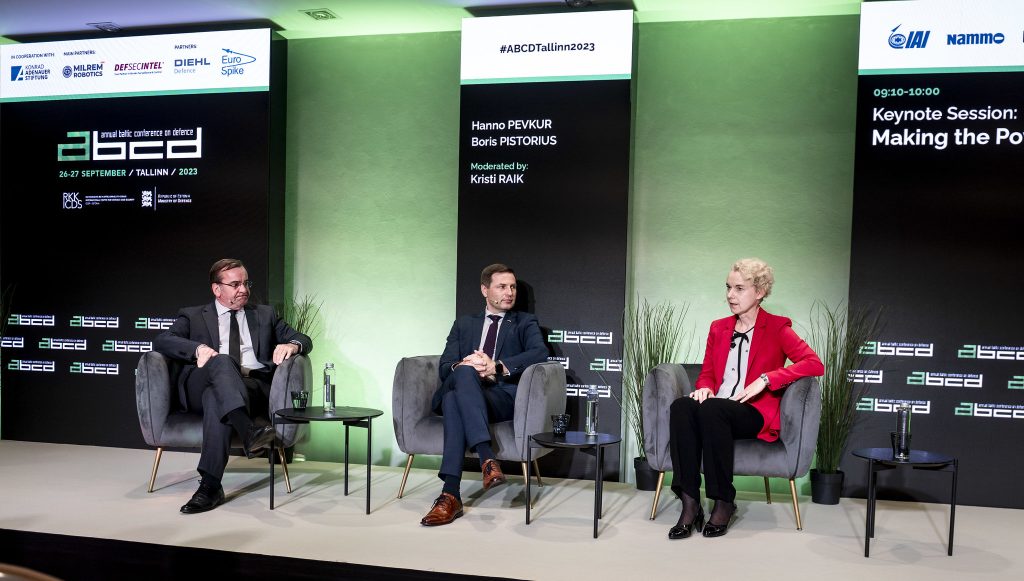
Session One: Russia’s Threat – How Deep is Their Bench?
This panel addressed Russia in terms of its current military capabilities and potential remobilisation, the defence industry, and lessons learned from the ongoing war. Echoing previous remarks made by other speakers, the panel acknowledged that Russia will likely remain an influential player in the world order in the medium- to long-term; however, Moscow will require an extended period to fully recapitulate its strength. With regard to future force employment—weapons, personnel, and capabilities—a common conclusion emerged surrounding the Russian shift towards size and quality. The panel discussed the Russian military’s evolution to prioritise a metal-heavy, less technical military over a more agile, specialised force. Yet, with this period of rebuilding in mind, the panel discussed how sanctions have not had their intended effect, partly due to the Kremlin’s ability to find loopholes and alternative suppliers. The panel found that due to these sanctions, however, the Russian industrial complex cannot fulfil the entirety of the military’s demands. The panel pointed out a potential disconnect between Russian political and military leadership and its actual economic and manufacturing capacity and simultaneously emphasised the personnel issues of the Russian military and their future ability to staff their forces. Finally, in terms of lessons learned from the war, the panel discussed Russia’s successful adaptations and shifts amidst its doctrine and defence system remaining relatively unchanged.
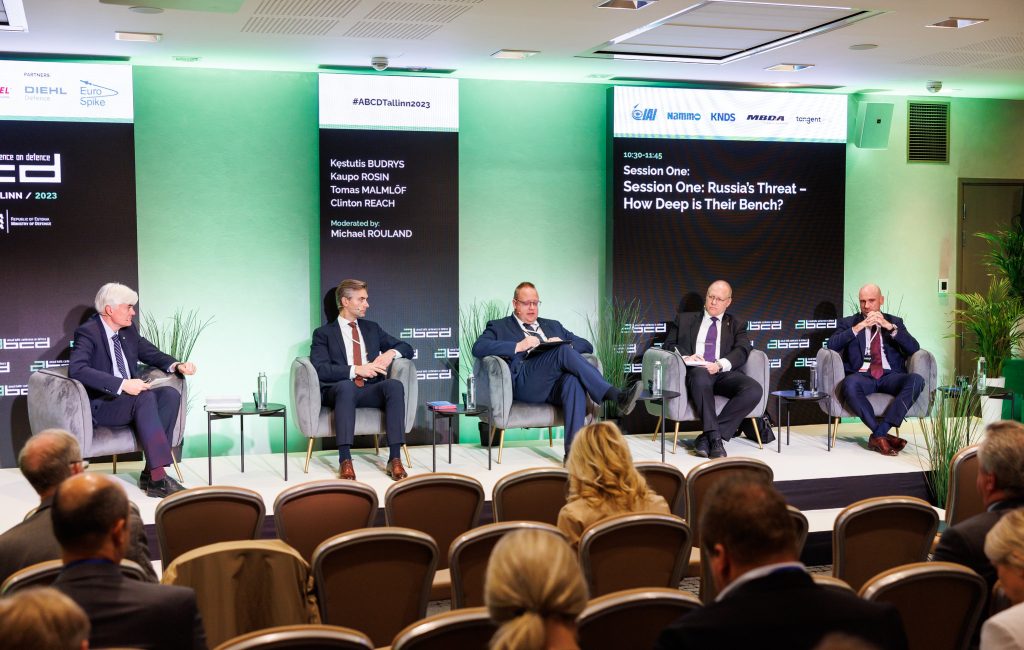
Keynote Session #2: Responding to the Threat – How Can We Set the Right Pace for a Long Run?
The conference’s final keynote came from Lieutenant General Ralph Wooddisse, the Commander Field Army of the British Army. In his remarks, which were generally geared towards the UK and NATO’s defence policies and operations, General Wooddisse first discussed the partnership between Estonia and the UK, which he optimistically assessed on the grounds of cooperation and interoperability. He discussed how his forces were preparing for the future fight by emphasising adaptability and mobility while encouraging innovation surrounding command and control (C2) capabilities in particular. He called for the transition to new, survivable technologies that allow land units to adapt quickly on the battlefield and fight from a distance. Ultimately, General Wooddisse concluded with the importance of alliances and cooperation—to ensure that all levels of the defence structure constantly improve and become more effective in their war-fighting capabilities.
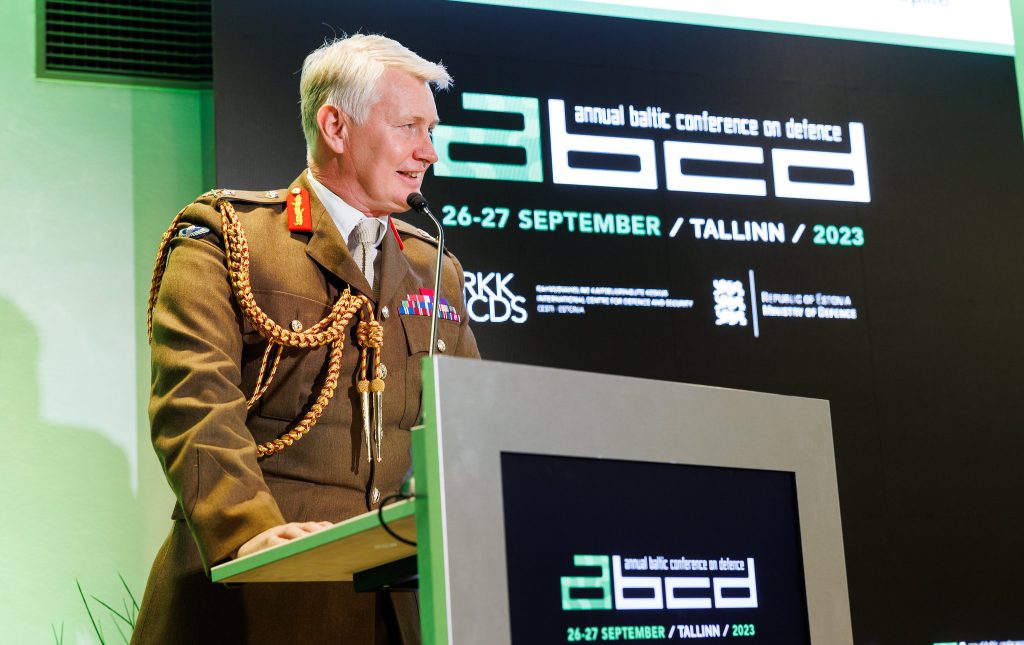
Session Two: Euro-Atlantic Strategy – Full Court Defence and Beyond
This panel featured a comprehensive discussion that largely dealt with the strategies of critical European and transatlantic decision-making bodies, NATO and the European Union. The conversation was first directed towards addressing Russia’s nuclear sabre-rattling, which was taken as a sign of the success of NATO’s deterrent effect, but also pointed towards the current lack of industrial ability to produce precision-strike or long-range capabilities. Turning towards the EU, its role was acknowledged as the “new kid on the block,” but its outsized role in providing financial assistance to Ukraine was also emphasised. The speakers were optimistic about the ability of the EU and NATO to collaborate—it seems that the two institutions can complement each other in various ways, with the EU being characterised as a “tool” for NATO to have a more comprehensive approach to European defence. The conversation then shifted to the impact of various regions and countries on the European defence landscape, particularly in the Nordic-Baltic region and Poland. These countries are in the most vulnerable geographic position in the Alliance; therefore, the speakers called for more explicit, more collective strategic objectives and a more effective European burden-sharing when it comes to defence. Additionally, the speakers reiterated the call for the fulfilment of promises made at various NATO summits—whether it be in Wales, Madrid, or Vilnius—but concluded with the optimistic idea that deterrence can be strengthened through the combination of responsibilities and approaches within the relevant organisations and actors in the European theatre.
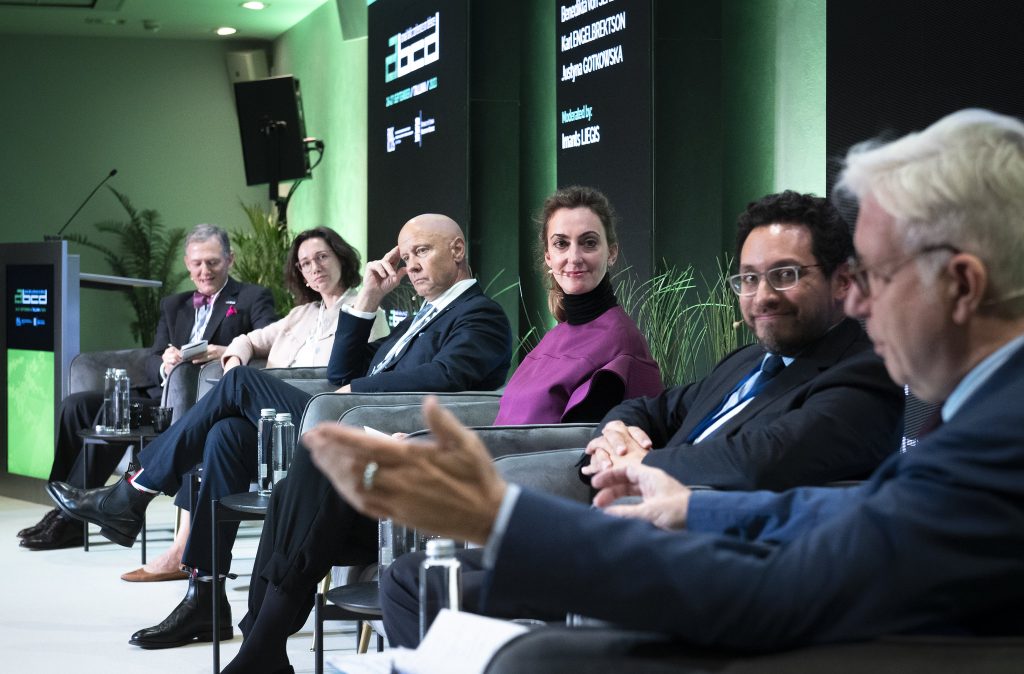
Session Three: Implementation – Home Run or Strikeout?
The final panel dealt with a question that had been continually emphasised throughout the other events of the conference: what is the status of the implementation of the promises and strategic shifts made at NATO’s Vilnius Summit? In general, the panel was optimistic about the Allies’ ability to implement the promises made in Vilnius, whether in terms of commitments, capabilities, or cash. In the view of the discussants, Vilnius is another marker along the path of effective, sustainable deterrence in Europe—and this Summit moved away from promises and towards implementation by linking forces to actual operational and tactical plans. Additionally, the Alliance-wide strategic shifts should be instrumental in coordinating the previously fragmented national forces into a cohesive and interoperable force. However, whether in terms of the changes to forward defence, new troops and plans, C2 improvements, or the “new strategic concept” in general, the panellists agreed that the execution needs to occur as quickly as possible—time is not on the Alliance’s side. Whether Ukraine wins or not, the speakers agreed that this long period of sustained aggression between NATO and Russia will require an investment to ensure that deterrence remains credible through its long-term, sustainable outlook. Such a sustained regime will be no small feat, and the Alliance will require a strategic shift to this future-focused perspective, especially when considering external challenges such as climate change or other developments that affect regional instability.
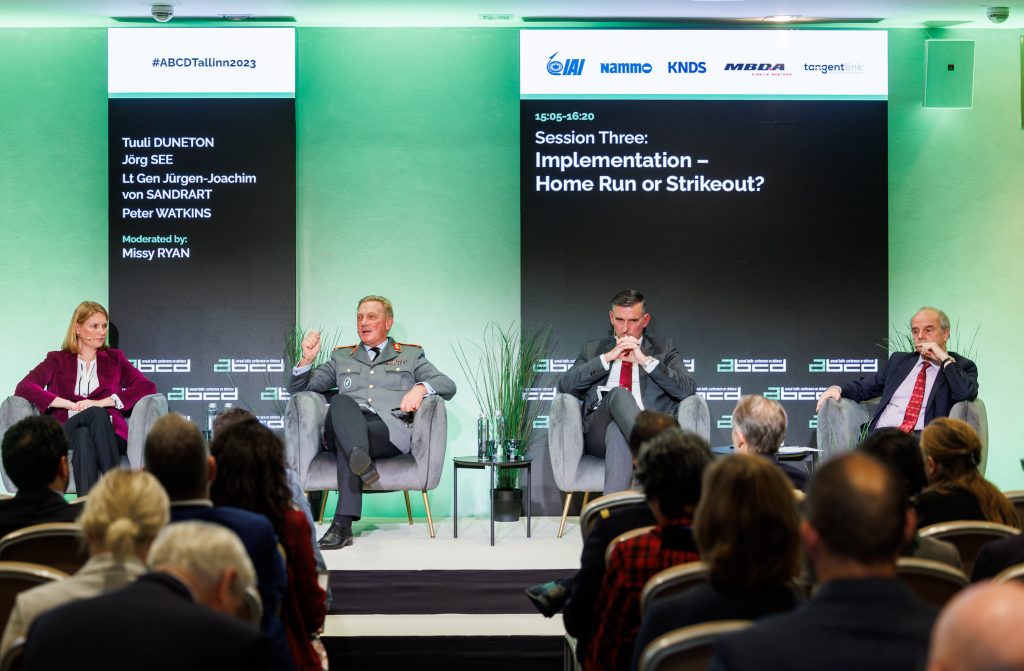


In cooperation with:
Main partners:
Partners:











